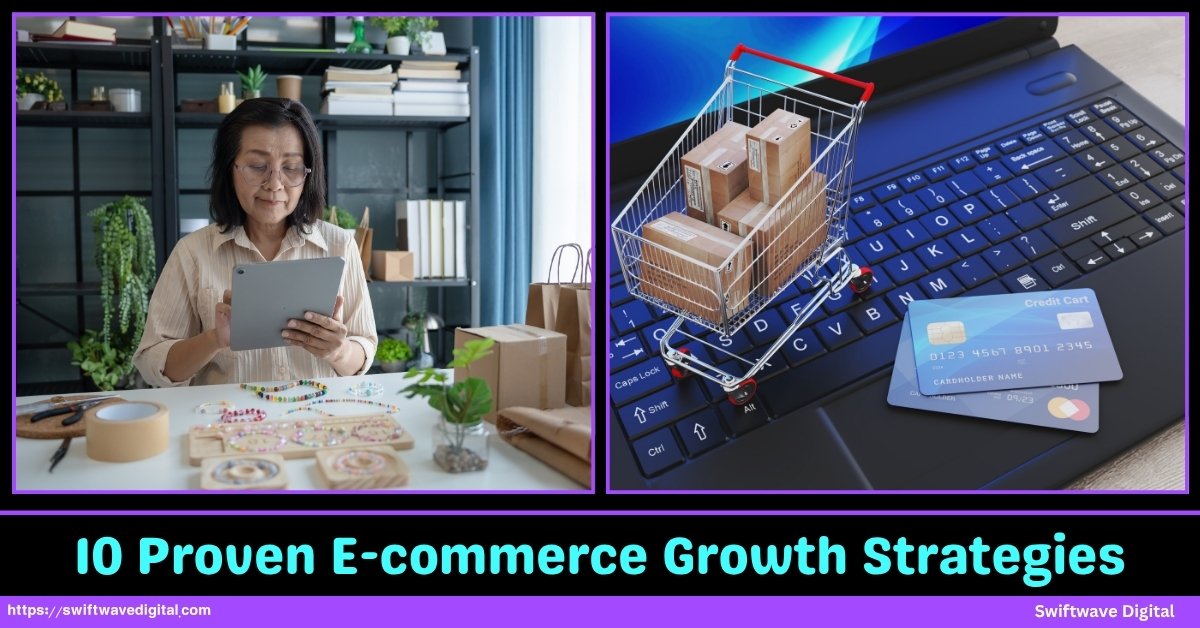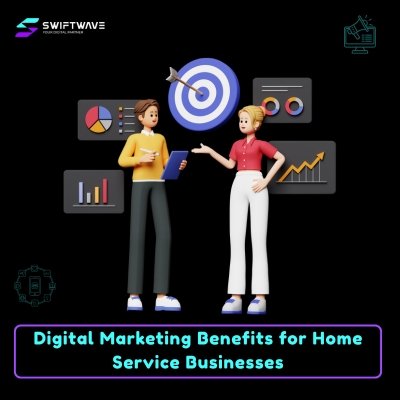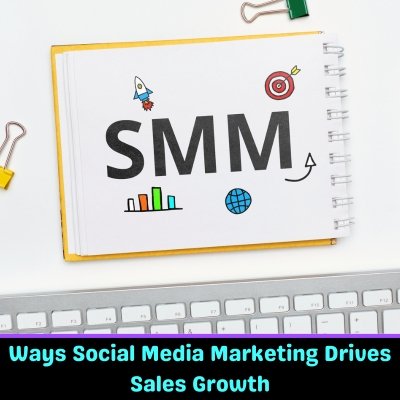E-commerce has transformed from a side channel into the backbone of global retail. In 2025, online sales make up more than 22% of total retail transactions worldwide a number that keeps climbing every quarter.
The competition, however, is fierce. Thousands of stores launch every month, but only a fraction manage to achieve consistent, scalable growth.
The difference lies not in having a great product alone, but in using the right strategies to attract, convert, and retain customers profitably.
Successful e-commerce businesses rely on data-backed tactics, user experience optimization, and smart marketing systems that compound results over time.
Whether you’re a startup brand or an established retailer, mastering the fundamentals of growth can turn a struggling store into a profitable, long-term business engine.
10 Proven E-commerce Growth Strategies
In this guide, we will explain 10 proven E-commerce Growth Strategies that actually work and how you can apply them step by step to scale your online store effectively.

1. Double Down on Conversion Rate Optimization (CRO)
Conversion Rate Optimization (CRO) is the backbone of e-commerce growth. Instead of constantly chasing new traffic, CRO focuses on getting more from the traffic you already have.
The average e-commerce conversion rate ranges between 2% and 4%, meaning 96 out of every 100 visitors leave without buying. By improving conversion rates even slightly, you can generate significant revenue without increasing ad spend.
To start, analyze your sales funnel — from landing page to checkout — and identify where users drop off. Simplify navigation, reduce unnecessary form fields, and make sure your checkout process is frictionless.
Offer guest checkout options, add trust badges, and ensure clear return policies to build credibility. Test different versions of product descriptions, images, and CTAs using A/B testing tools. Site speed is also critical; even a one-second delay can reduce conversions by 7%.
Mobile responsiveness is non-negotiable — with more than half of global e-commerce traffic coming from smartphones, a poor mobile experience directly costs you sales.
Lastly, use heatmaps and session recordings to understand user behavior. See where visitors hesitate, scroll, or click away.
Small adjustments — like repositioning the “Add to Cart” button or improving product photography — often yield measurable conversion lifts. CRO is an ongoing process, not a one-time fix, so keep testing and optimizing continually.
2. Optimize On-Site Search and Navigation
Your site’s search and navigation system determines how quickly users find what they want — and how often they buy. Shoppers who use on-site search convert at a higher rate because they already have purchase intent.
Poor search functionality, irrelevant results, or confusing menus frustrate users and cause drop-offs.
Start by improving search accuracy. Implement predictive search suggestions, spelling corrections, and filters for categories like price, color, or size. If users frequently get “no results found,” you’re missing opportunities.
Monitor search logs to identify popular keywords and common errors. Add related product tags and synonyms to capture a wider range of queries.
Navigation should be simple and intuitive. Keep menus shallow — users shouldn’t need more than three clicks to reach any product. Highlight key categories and promotions.
For large inventories, use breadcrumb navigation and clear subcategories. Product filtering, sorting options, and visible search bars enhance usability.
A seamless search and navigation experience reduces bounce rate and improves user satisfaction, ultimately boosting sales. Think of it this way — every second a visitor spends hunting for a product is a chance for them to leave your site.
3. Increase Average Order Value (AOV) via Upsells, Cross-Sells, and Bundling
Raising your Average Order Value (AOV) is one of the fastest ways to grow revenue. It focuses on encouraging customers to spend more per transaction rather than acquiring new ones. Implementing upselling, cross-selling, and bundling strategies can yield immediate returns.
Upselling involves offering customers a better version of what they’re already considering — such as a premium product or a larger size. Cross-selling recommends complementary items, like offering shoe polish when a customer buys shoes. Bundling groups related products at a small discount to encourage volume purchases.
Free shipping thresholds also influence behavior. For example, “Spend $10 more to get free shipping” can nudge users to add extra items to their cart. Volume discounts, such as “Buy two, get one free,” can further increase order size.
Display these offers clearly on product and checkout pages, but avoid overwhelming the user. Post-purchase upsells — offering an additional item or upgrade after checkout — can also boost revenue with minimal friction. Every small increase in AOV compounds quickly over hundreds or thousands of transactions.
4. Implement a Strategic Retention and Loyalty Program
Customer retention is cheaper and more profitable than constant acquisition. Studies show that retaining just 5% more customers can boost profits by up to 25%. A loyalty program rewards repeat customers, incentivizing them to return and buy again.
Start by analyzing purchase frequency and customer lifetime value. Then build a loyalty structure that offers points for purchases, referrals, or reviews. Allow customers to redeem these points for discounts, freebies, or exclusive products. Tiered programs (e.g., Silver, Gold, Platinum) encourage continued engagement.
Beyond loyalty points, implement automated post-purchase emails to thank buyers and suggest related items. Use subscription models or auto-replenishment options for products bought regularly. Run win-back campaigns targeting inactive customers with personalized offers.
The goal is to make existing customers feel valued. When customers know they benefit from every purchase, they’re less likely to switch to competitors. Consistent communication, rewards, and relevant offers strengthen long-term relationships and stabilize revenue flow.
5. Leverage Referrals and Word-of-Mouth
Referral marketing taps into trust — people are more likely to buy when recommended by someone they know. It also reduces acquisition costs since customers do part of your marketing for you.
Create a referral program that rewards both referrers and referees. Offer cash rewards, store credits, or discount codes for every successful referral. Make sharing easy by providing pre-generated referral links, social sharing buttons, and email templates.
Promote your referral program on post-purchase confirmation pages, in emails, and within your loyalty dashboard. Keep the process simple — too many steps discourage participation. Track referrals accurately and ensure timely reward delivery to maintain credibility.
A strong referral program creates a self-sustaining loop of new customers driven by satisfied buyers. Over time, this reduces dependency on paid ads and builds a base of loyal brand advocates.
6. Use Personalization and Smart Product Recommendations
Personalization is no longer optional — it’s an expectation. Customers want relevant experiences that match their behavior and preferences. Using personalization effectively increases engagement, conversion rates, and average order value.
Start by collecting behavioral data — browsing history, purchase patterns, and product views. Use this data to display personalized recommendations such as “Frequently Bought Together” or “Recommended for You.” Implement personalized email marketing campaigns that show products based on previous purchases or abandoned carts.
Segment users based on demographics, interests, and buying habits. For new visitors, use location or device data to tailor content. Returning customers should see items similar to what they’ve viewed or purchased before.
Dynamic homepages, AI-driven search results, and real-time product suggestions enhance user experience and relevance. Personalization not only improves conversion but also makes customers feel understood and valued, increasing loyalty and repeat sales.
7. Expand Channels: Marketplaces, Social, Ads, and Affiliates
Relying solely on your website limits your reach. Expanding across multiple sales channels increases visibility and diversification. Each channel serves a unique audience and strengthens brand exposure.
Start with major marketplaces like Amazon, eBay, or regional platforms such as Daraz. They provide immediate access to large audiences, though fees may apply. Next, explore social commerce — Instagram and TikTok Shops allow users to purchase directly within apps.
Run paid ad campaigns strategically across Google, Meta, and YouTube to capture new customers. Use retargeting to bring back visitors who didn’t convert. Build an affiliate program by partnering with bloggers or influencers who promote your products for a commission.
Track performance across all channels. Measure ROI, conversion rates, and customer acquisition costs separately for each. Don’t spread too thin — scale only what works. A balanced multi-channel approach protects your business from algorithm changes or platform dependency while fueling consistent growth.
8. Data-Driven Analytics and Attribution Model
Without accurate data, decisions become guesses. Analytics is the foundation of growth, enabling you to understand customer behavior, measure campaign success, and allocate resources efficiently.
Define key performance indicators (KPIs) like conversion rate, AOV, retention rate, and customer lifetime value (LTV). Use analytics tools such as Google Analytics, Shopify Insights, or GA4 to monitor them. Segment your data by channel, campaign, and customer cohort to reveal deeper insights.
Implement proper attribution models — not every sale comes from a single click. Multi-touch attribution helps identify which touchpoints influence a purchase, allowing you to credit marketing channels fairly.
Use cohort analysis to see how retention and repeat purchases change over time. Regularly audit data for accuracy. With data-driven decisions, you can reallocate ad spend toward profitable campaigns, cut waste, and scale strategies that drive measurable ROI.
9. Invest in Site Performance, Mobile UX, and Core Web Vitals
Speed and usability directly impact conversion rates. A slow or poorly optimized website pushes visitors away, no matter how good your products are. Site performance and UX should be treated as part of your marketing strategy.
Google’s Core Web Vitals — Largest Contentful Paint (LCP), Interaction to Next Paint (INP), and Cumulative Layout Shift (CLS) — measure how fast and stable your website feels. Aim for fast loading (under 2 seconds), smooth scrolling, and minimal layout shifts.
Optimize images using modern formats like WebP and enable lazy loading. Use a Content Delivery Network (CDN) to deliver content faster globally. Simplify your design — avoid heavy scripts, unnecessary pop-ups, or large carousels that slow pages down.
Mobile UX deserves priority since most traffic now comes from mobile devices. Ensure buttons are clickable, forms are easy to fill, and checkout is smooth. Regularly test your website on real devices and under different network speeds. Improving performance not only boosts user satisfaction but also improves SEO rankings and conversion rates.
10. Use AI, Automation, and Smart Tools to Scale
Manual operations limit scalability. AI and automation enable e-commerce businesses to handle growth efficiently while improving customer experience.
Use AI-powered chatbots to answer customer queries, recommend products, and guide purchases. These tools can operate 24/7, reducing support costs. Implement marketing automation to trigger personalized emails based on behavior — abandoned cart reminders, follow-ups, and product recommendations.
AI-driven recommendation engines analyze user data to suggest products that are most likely to convert. Predictive analytics helps forecast demand, manage inventory, and reduce stockouts.
Automation also applies to logistics — automated order tracking, inventory updates, and fulfillment systems improve efficiency. Dynamic pricing tools adjust prices based on demand and competitor activity to maximize profit margins.
By combining automation with data insights, businesses can scale without increasing manual workload. The result is higher productivity, better accuracy, and faster response times — all essential for sustainable growth.
Putting It All Together: Roadmap and Order of Operations
E-commerce growth requires a structured plan, not random experiments. Start with a baseline audit — review analytics, conversion rates, and customer feedback. Fix basic issues like site speed, navigation, and mobile performance first.
Once the foundation is stable, move to CRO and AOV optimization. Then introduce personalization, retention programs, and referral systems to strengthen engagement. As your processes mature, expand into new channels and integrate automation tools to scale.
Each step builds on the previous one. Continuously monitor data, run experiments, and refine strategies. Growth is not about doing everything at once but improving one metric at a time until the system compounds.
Risks, Caveats, and What to Watch Out For
Every growth strategy carries potential risks. Over-discounting can erode profit margins. Over-personalization can feel invasive if done without consent. Too much automation can make customer interactions feel robotic.
Neglecting retention while chasing new traffic drains budgets quickly. Similarly, scaling ad spend without proper tracking can inflate costs. Ensure your analytics setup is accurate and up-to-date before scaling campaigns.
Another risk is dependency on third-party platforms like marketplaces or social media. Algorithm changes can disrupt sales overnight. Maintain a balance between owned channels (your website, email list) and external ones.
Keep compliance in mind — respect privacy laws like GDPR and ensure transparent data handling. Growth should be sustainable, ethical, and customer-centered.
Metrics to Track and Benchmark
Growth isn’t real unless it’s measurable. Track metrics that reflect profitability and retention, not vanity numbers like page views or followers.
-
Conversion Rate (CR): Percentage of visitors who complete a purchase.
-
Average Order Value (AOV): The average revenue per order.
-
Customer Acquisition Cost (CAC): Total cost to acquire one new customer.
-
Customer Lifetime Value (LTV): Total expected revenue from one customer.
-
Cart Abandonment Rate: Percentage of shoppers who add items but don’t buy.
-
Repeat Purchase Rate: Percentage of customers making multiple purchases.
-
Return on Ad Spend (ROAS): Revenue earned per dollar spent on advertising.
-
Website Speed & Core Web Vitals: Indicators of site performance.
-
Referral Rate: Percentage of new customers acquired through referrals.
-
Retention Rate: Percentage of customers who return within a defined period.
Compare your performance to industry averages, but focus on improving your own metrics over time. Growth comes from consistent tracking, small improvements, and disciplined execution.
Conclusion
E-commerce growth doesn’t come from luck or one-time marketing wins —it’s built on consistent, data-backed execution. Every strategy, from conversion optimization to AI automation, plays a role in creating a scalable system that drives steady revenue.
The key is to start with strong fundamentals: a fast, user-friendly website, clear navigation, and a frictionless checkout. Then, focus on maximizing each customer’s value through personalization, upselling, and loyalty programs.
Use analytics to guide every decision and measure what truly matters not just traffic, but profit, retention, and customer lifetime value.
In today’s competitive market, e-commerce success comes from improving a little every day — one test, one campaign, one process at a time. The brands that win are those that adapt fast, automate smartly, and never stop optimizing.



